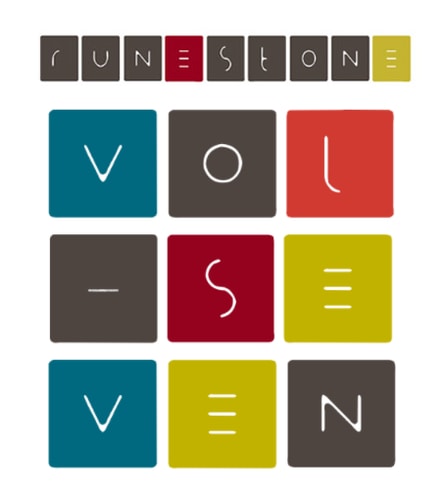Runestone – 2018
In her editor’s note to Runestone Journal Volume 4, Gretchen Marquette writes about the value of literature and its role in helping us better understand ourselves. Recent research has shown how fiction improves our understanding of the world around us as well as make sense of our own predicaments. Marquette goes on to express this as the power of all literature, and thus the responsibility of writers old and new to “show us the way forward in our private moments of despair.”
In her editor’s note to Runestone Journal Volume 4, Gretchen Marquette writes about the value of literature and its role in helping us better understand ourselves. Recent research has shown how fiction improves our understanding of the world around us as well as make sense of our own predicaments. Marquette goes on to express this as the power of all literature, and thus the responsibility of writers old and new to “show us the way forward in our private moments of despair.”
“Filling the Silence” by Lynnly Damm is a work that fulfills this responsibility. If I had a checklist for good creative nonfiction, it would include: staying focused on a singular topic while taking the reader through a collage of networked experiences and emotions; either (a) causing the reader the kind of borderline discomfort that makes them want to stop reading because there is some experience so aberrant and honestly detailed that the reader finds it difficult to comprehend, or (b) that same discomfort because the experience hits so close to home; and finally – humor. “Filling the Silence”: check, check (a), check (b), and check.
Writing about the silences that fall in her family’s relationships, Damm opens with her best attempt at coming out to her father during a camping trip. Attempting to explain that Ema, Damm’s girlfriend along for the trip, is actually her partner:
[. . . ] I need to tell him, and it has to be now, before she gets back and has to be a part of the conversation. I hate the silence choking me.
“I’m sure you know,” I say, finally. “But—”
“I know,” he says. “But you can say it if you want to.”
I don’t.
And so opens the exploration of communication, and the lack thereof, in Damm’s family, where, “If there’s one rule to my family, it’s this: never, ever talk directly about anything that could be considered unpleasant. Talk around it, blame it on something else, or better yet, bury it. Whatever you do, just don’t talk about it.”
How many of us have this same—and yes, unspoken—rule? And what family ‘stories’ does this perpetuate through the years: stories we tell ourselves and others, maybe even write down and share more broadly, believing these are the stories of our history? Only to find out later, at some family gathering, that the stories we thought were true, well, they maybe weren’t, they maybe were partly true, but so are each of the stories other people share around the same experience. Damm nails this experience perfectly:
There’s a lot of confusion during these conversations, and it’s a lot of fun to tell a story your parents told you as a kid about someone else in the family, and then hear two or three different versions told back to you that were told to everyone else. They’re always different, sometimes in surprising ways. It’s fun, I promise. There’s a weird humor to not knowing the truth about your own family. It’s like a reality show where there’s a lot of different options and, for some reason, everyone just picks whatever sounds best to them about the people they care about. Maybe that’s the punchline of the joke—you get to decide what’s funny and what’s not.
Of course, the flip side to that, which Damm touches on and could be a topic of deeper exploration, are the stories our families tell about us, “In the same way, everyone in my family knows things about me, though often times it’s a little skewed, and never seems to line up with who I recall telling.” It’s a two-way street, that’s for sure.
The silences cut through it all, though, and it’s the silences that don’t get discussed. With issues of mental illness and substance abuse in her family, this only adds layers of complexity to the desperate need Damm expresses for wanting to break the silences. This is essential, not only in her family, but as it reflects our culture and communities as we shift to becoming more vocal, recognizing a person’s need for help before it is too late. Damm confronts this concern: “How much of this wanting to keep secrets is normal, human stuff, and how much of it is toxic? It’s one of the few tough things my sister and I talk about when we’re together: our fears of having the wrong moral compass. “
Damm explores the role silence plays in humor, adding some humor to her own writing: “Silence can be funny. Mimes, for example, are funny. Mostly creepy, but there was probably a time when they were funny. They’re like silent clowns, which is maybe a bad example, because clowns are creepy, too.” And ultimately, she brings it back around to a story about her dad and her breaking a silence between them. It’s not perfect, it’s downright uncomfortable, and there’s no epiphany ending. But as Damm closes, “It’s a start.”
As a teacher, I would love to use this essay in my class and have students write about communication in their own family. I can’t imagine a person for whom “Filling the Silence” doesn’t at least touch on some of their own experiences with family. It reveals what we might have thought was “just the way my family is,” and moves us forward to a deeper understanding of the complexities of family dynamics in the larger social structure.
[runestonejournal.com]





